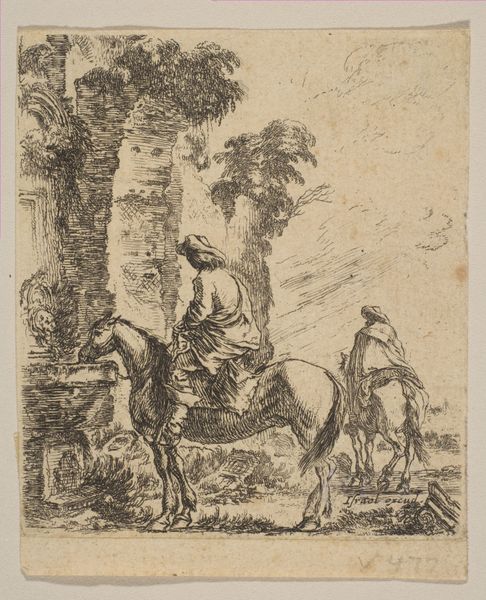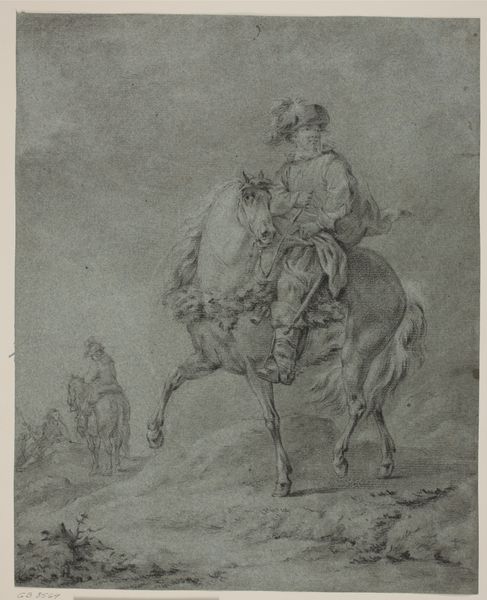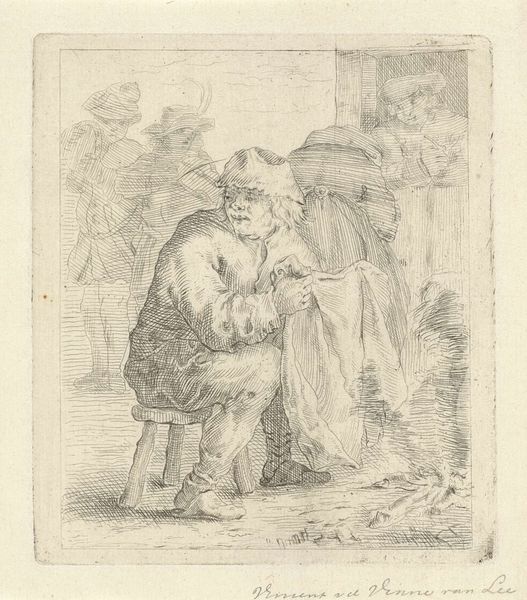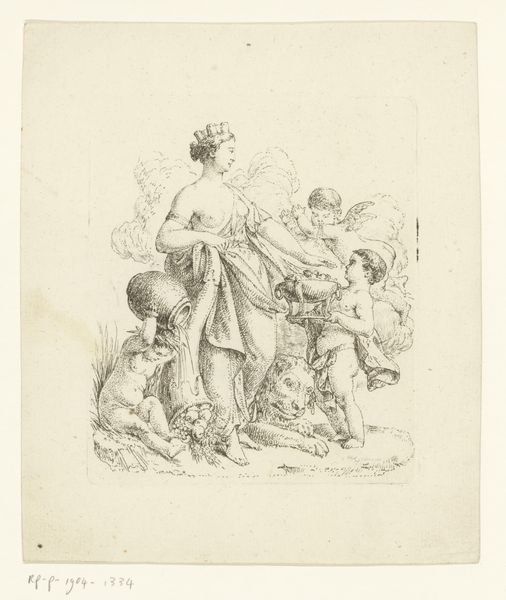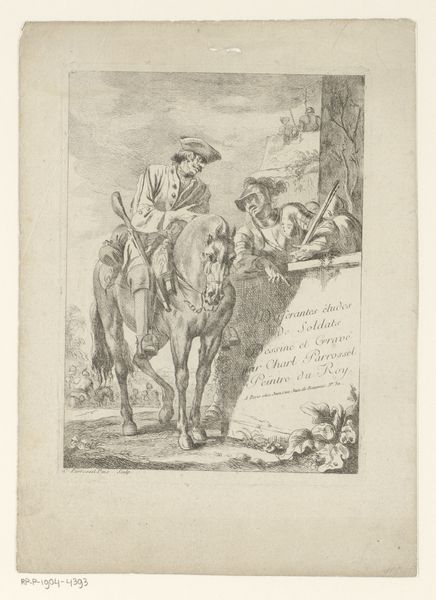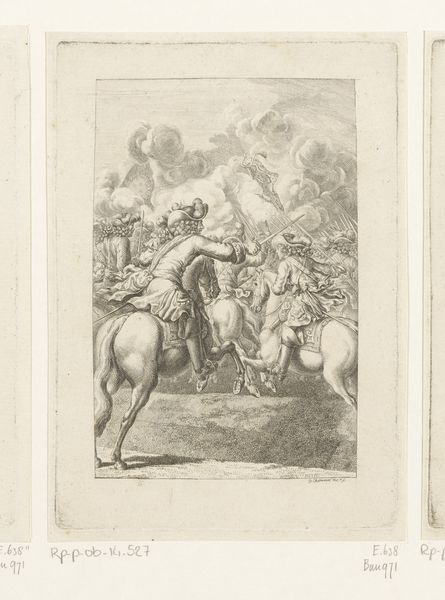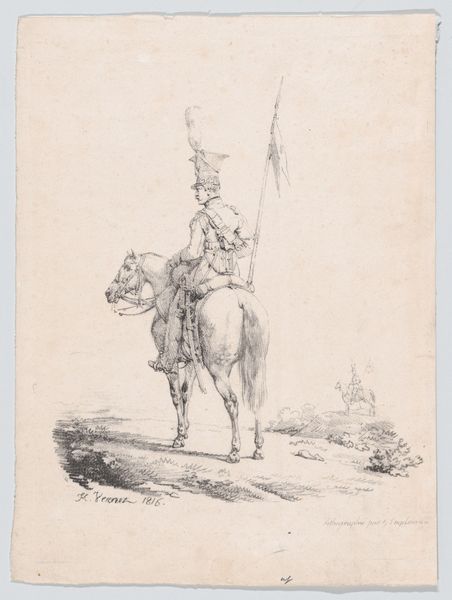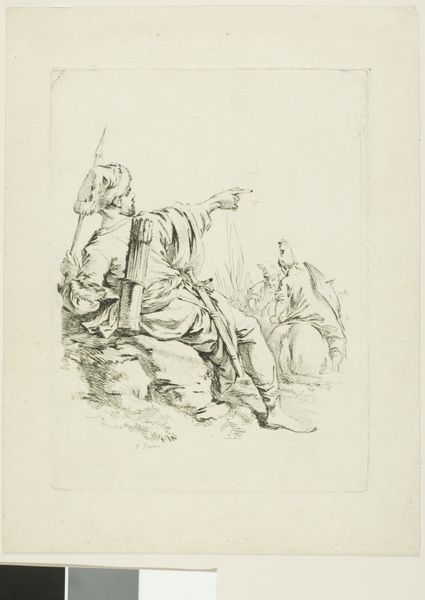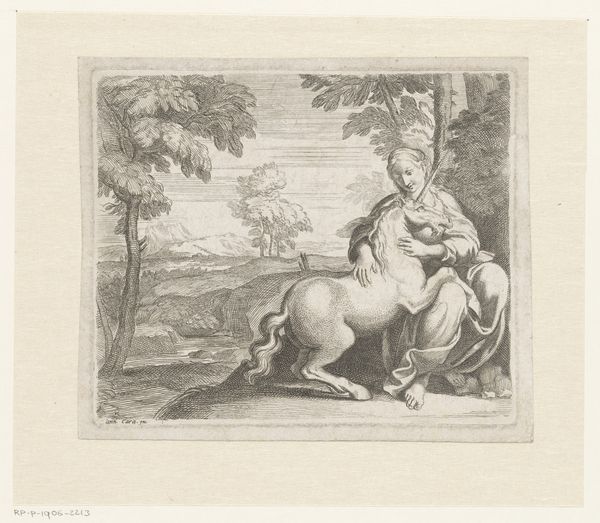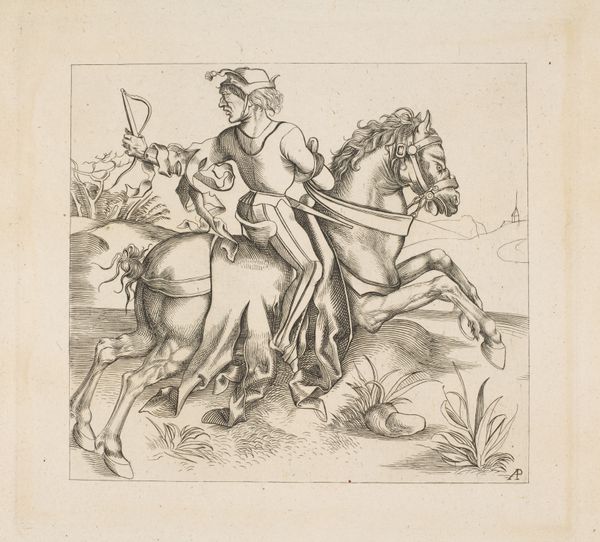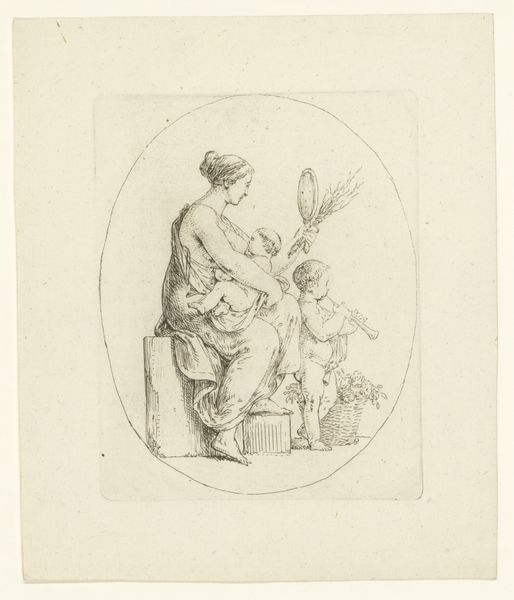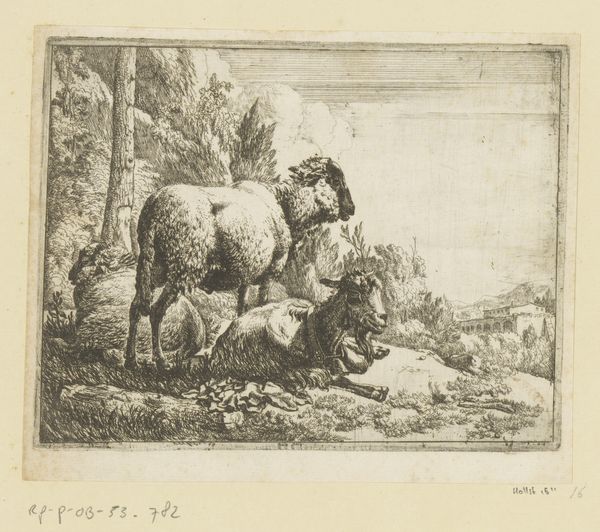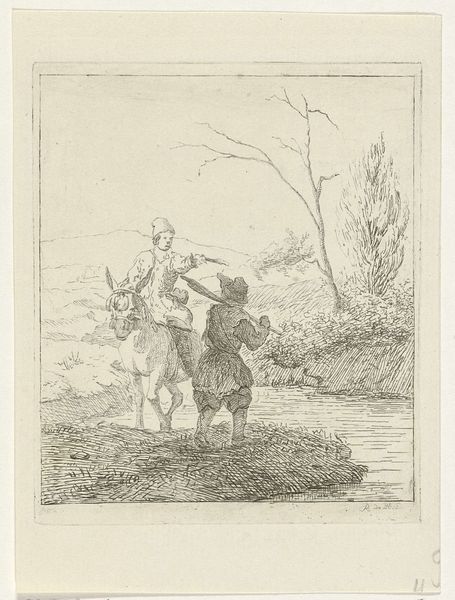
print, engraving
#
neoclacissism
#
allegory
# print
#
old engraving style
#
landscape
#
figuration
#
line
#
engraving
Dimensions: height 155 mm, width 127 mm
Copyright: Rijks Museum: Open Domain
Editor: Here we have Christian Bernhard Rode's 1788 engraving, "Allegorie van de Ijver", or "Allegory of Diligence". The delicacy of the lines gives it an almost ethereal quality, despite depicting quite ordinary figures and objects. How should we understand an image like this? Curator: It's important to recognize how neoclassical allegories functioned within the broader context of late 18th-century social and political thought. These images, far from being purely decorative, were often didactic, aimed at promoting specific civic virtues and behaviors. Why do you think the artist chose to depict diligence in this particular way, associating it with seemingly mundane activities? Editor: It's interesting that you frame it as didactic, rather than just aesthetic. Maybe it's about finding virtue in everyday life? The woman's labor, the horse as a symbol of burden – together they project industry, I suppose? Curator: Precisely. And consider the socio-economic changes occurring at that time. The rise of a mercantile class, new attitudes towards labor, and a growing emphasis on productivity—these are the contexts within which this image would have resonated. How might the burgeoning middle class have perceived an image promoting diligence, do you think? Editor: Probably quite positively! They're the ones embodying it. Almost like visual propaganda then, subtly promoting the virtues needed for a successful commercial society? Curator: Indeed. The image normalizes and elevates certain activities, contributing to the construction of an ideal citizen. Recognizing the socio-political forces at play reveals the work as more than just a pretty engraving; it’s a cultural artifact actively shaping values and behaviors. Editor: Wow, that changes everything. Seeing it as active instead of passive – I'll never look at neoclassical art the same way again. Thanks for clarifying.
Comments
No comments
Be the first to comment and join the conversation on the ultimate creative platform.
